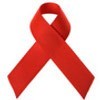By Jennifer Morton, Managing Editor
I appreciate the skill and patience that goes into making a quilt. My mom loved to make quilts and proudly wore a sweatshirt that read: “Quilters Always Come With Strings Attached.”
I also appreciate the love and devotion that goes into each panel of the AIDS Memorial Quilt. Today, the Quilt consists of more than 50,000 individual panels and features more than 110,000 names. Weighing in at 54 tons, it’s the largest community art project in the world.
Next week, the Mizell Center in Palm Springs, California, will display sections of the AIDS Memorial Quilt—including new panels created by local community organizations— for a special exhibit. The event will feature a panel discussion during which participants will reflect on the history of HIV and explore the origins and evolution of the Quilt. As one of the exhibit’s community partners, POZ was also encouraged to contribute a panel. I’d never considered making a panel before, but, given my deep appreciation for quilting—and the Quilt—it didn’t take long for me to decide it was something I absolutely wanted to do.
Conceived by Cleve Jones in 1985, the Quilt was founded as a memorial to celebrate the lives of people who died of AIDS-related causes. It was first displayed on the National Mall in Washington, DC, on October 11, 1987, as part of the National March on Washington for Lesbian and Gay Rights.
Today, the Quilt continues to be displayed around the world, helping educate people about HIV and the continued impact of the epidemic. Launched in 2022, the Change the Pattern initiative focuses on bringing sections of the Quilt to communities in the South, where HIV disproportionately impacts people of color.
While working for POZ, I’ve been fortunate to see a number of Quilt displays over the years, including a large display on the National Mall in Washington, DC, during the 2012 International AIDS Conference.

2012 AIDS Memorial Quilt Display on the National Mall in Washington, DCJennifer Morton
The Quilt is a powerful tool for advocacy and education. The stories of the people represented in the Quilt remind us of the many others lost in the four decades since the first cases of HIV were reported. And although some people in the United States today are still dying of AIDS-related causes, most people with HIV are not thanks to effective antiretroviral medication.
The POZ panel for the Quilt was designed using POZ magazine covers featuring people with HIV who have passed away. Some of these individuals died directly of AIDS-related causes, and some did not. But they each have a unique story that deserves to be remembered.
I’m truly honored to have been able to make this panel for POZ and add these names to the AIDS Memorial Quilt. Click on the links below to read their stories:
POZ: Remembering Your Stories
Pedro Zamora (1972–1994)
Ilka Tanya Payán (1943–1996)
Tom Stoddard (1949–1997)
Kiyoshi Kuromiya (1943–2000)
Jeff Getty (1957–2006)
Henry Nicols (1973–2000)
Sean Sasser (1968–2013)
Jerry Herman (1931–2019)
Michael Jeter (1952–2003)
Phil Reed (1949–2008)
Stephen Gendin (1966–2000)
Herb Ritts (1952–2002)
Chloe Dzubilo (1960–2011)
Jane Fowler (1935–2020)
Larry Kramer (1935–2020)
Kory Montoya (1965–2010)
Vicki Derdivanis (1934–2018)
Timothy Ray Brown (1966–2020)
Josh Kruger (1984–2023)
Anyone can make and submit a Quilt panel. I was lucky to have an amazing volunteer from Mizell (thanks, Kate!) help me turn my vision into a reality, but you don’t have to be an artist or a sewing expert to create a tribute to a loved one.
Explore the AIDS Memorial Quilt and get inspired! The entire Quilt is available digitally and can be searched by name.
Click here to register for the panel discussion at the Mizell Center on Wednesday, November 15, at 5:30 p.m. or visit the quilt exhibition during the times listed below.
Friday, November 17 • 3 p.m. to 7:30 p.m.
Saturday, November 18 • 10 a.m. to 3 p.m.
Sunday, November 18 • 10 a.m. to 3 p.m.

Quilt Facts
- The Quilt was conceived by Cleve Jones in 1985.
- The Quilt was first displayed on the National Mall in Washington, DC, on October 11, 1987.
- The Quilt includes panels from every U.S. state and 28 countries.
- Each Quilt panel is 3 feet by 6 feet, representing the size of a grave.
- If you spent 30 seconds viewing each panel, it would take 17 days to view the entire Quilt.
- Materials in the Quilt include badges, Barbie dolls, buttons, car keys, condoms, corsets, feather boas, gloves, hats, jeans, vinyl records, wedding rings and more!













Comments
Comments